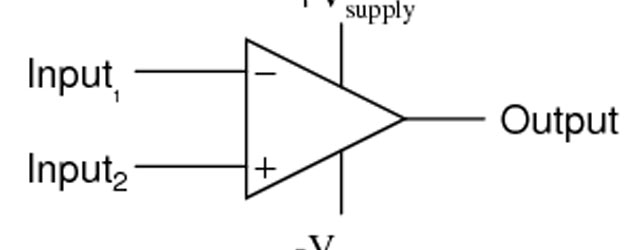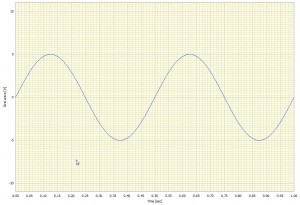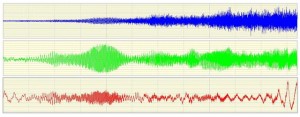Prosig data acquisition systems use differential inputs, but what are they and why are they so special? This subject is not always fully understood and, therefore, the focus of this article is to try to make the difference clearer and explain why differential inputs are the obvious choice in a high-quality, high-precision system like the Prosig DATS-solo, DATS-Tetrad and DATS-hyper12.
First, we must understand what we mean by single-ended and differential inputs. To that end, we should start with amplifiers. The difference between single-ended and differential-ended inputs is the difference between the types of amplifiers used. Most modern data acquisition systems will have some sort of signal amplifier.
Amplifiers will, quite simply, take a signal and amplify it. For example, in Figure 1 we have a sine wave with an amplitude of +/-5 Volts. If this were amplified by a factor or two, the result would be as shown in Figure 2 – a sine wave with an amplitude of +/- 10Volts.
Therefore, if we consider a simple amplifier, the signal into the amplifier is amplified to the output. In Figure 1 consider that the sine wave was actually carried on two copper wires. One would be connected to earth or ground and the other would carry the AC (alternating current) signal as seen in Figure 1.
There are however problems with this method of cabling and transporting signals. The main problem is that ground is not a constant 0V, but is, in reality, at different levels in different places. The closer these places are together then the more likely the ground levels will be the same. This is often the main cause of errors with single ended inputs. With a connection between two quite different grounds, the difference in these levels can cause large currents to flow, these are commonly known as earth or ground loops.
Additionally, single ended inputs can suffer from noise injection. Noise can be injected into signals because the wire that carries the signals can act as an aerial and thus pick up all manner of electrical background noise. Once this noise has been introduced into the signal this way there is no way to remove it.
Unlike single ended amplifiers, differential amplifiers amplify the voltage difference between two inputs. A single ended amplifier is shown in Figure 3 and a differential amplifier in Figure 4.
Both these types of amplifier are powered in the same way, but the differential amplifier, amplifies the difference between its two inputs, whereas the single ended amplifier, amplifies the difference between its single input and ground.
The differential signal, and the cabling method used, eliminates common mode noise. This is unwanted noise that is injected into both wires, but because only the difference between the inputs is measured it is ignored. This allows for much longer cables without increasing unwanted noise in the measured signal.
However, a common problem when using differential inputs is neglecting any possible connection to ground. For example, in the case of battery powered equipment, the battery and circuits might produce signals that are near the limit of the amplifier, but if a ground is introduced into the circuit it could be significantly different to that of the battery voltages, further this could be outside the operation range of the amplifier, when you consider all three of these voltages, ground, battery – and battery +. These situations are known commonly as floating signals. The signals are not referenced to ground. In these cases it is required to introduce a ground to provide this reference. For this situation the instrumentation, in this case a Prosig P8000, has a GND connection. A wire would be inserted here and connected to the electrical ground. Thus the differential signals are measured against each other with reference to ground.
In summary, differential inputs reduce noise and allow for potentially longer cabling. They can be short circuited to be used as single ended inputs if required. Differential inputs can be used for floating signals, but in such cases a reference should be provided to the instrumentation.
James Wren
Latest posts by James Wren (see all)
- What Are dB, Noise Floor & Dynamic Range? - January 12, 2024
- How Do I Upsample and Downsample My Data? - January 27, 2017
- What Are Vibration, Torsional Vibration & Shaft Twist? - November 8, 2016









Pingback: Is it possible to connect the BNC outer to ground?
it’s really useful information – Thank you very much